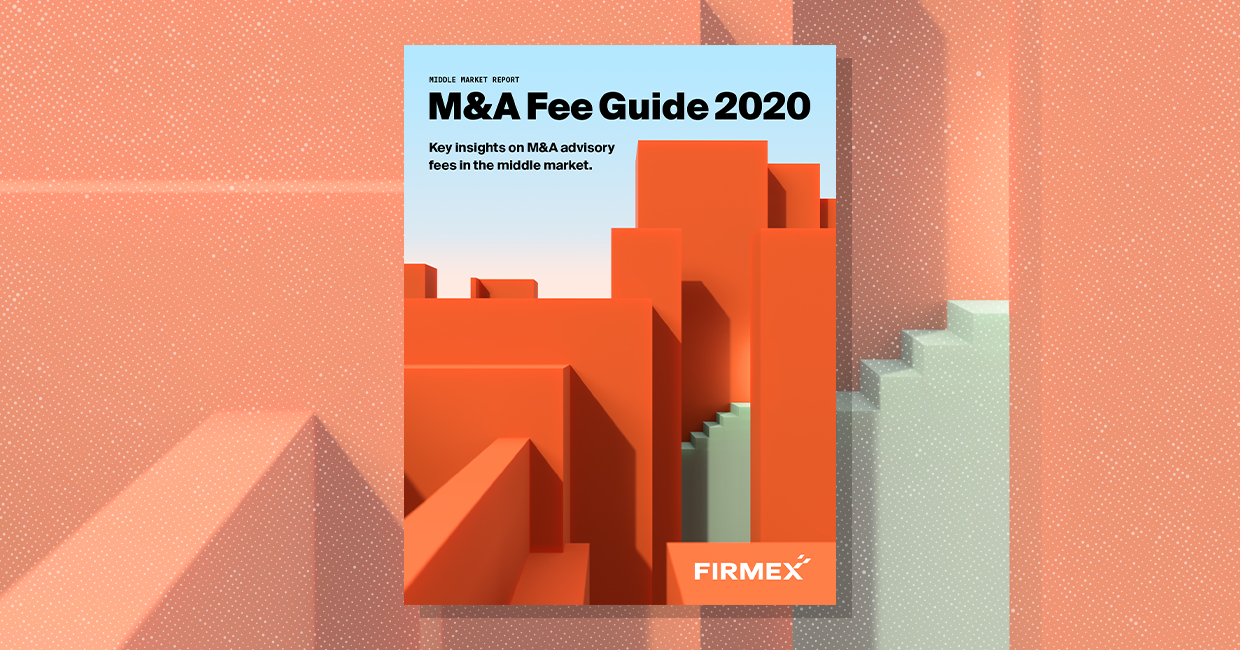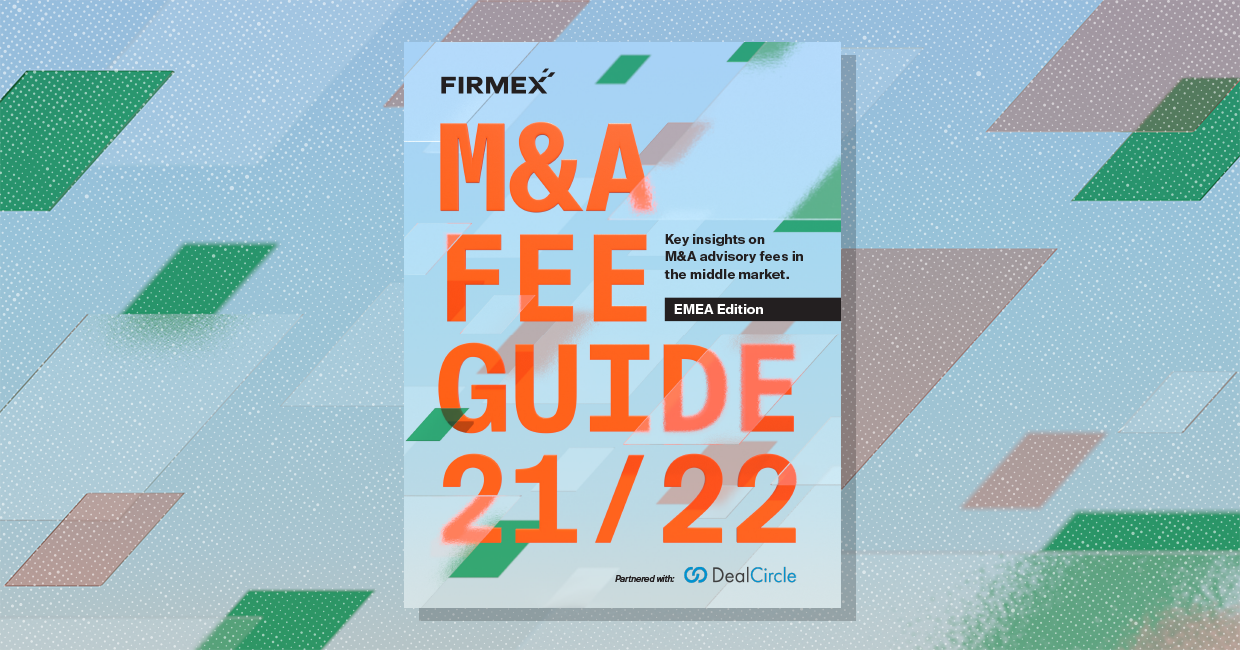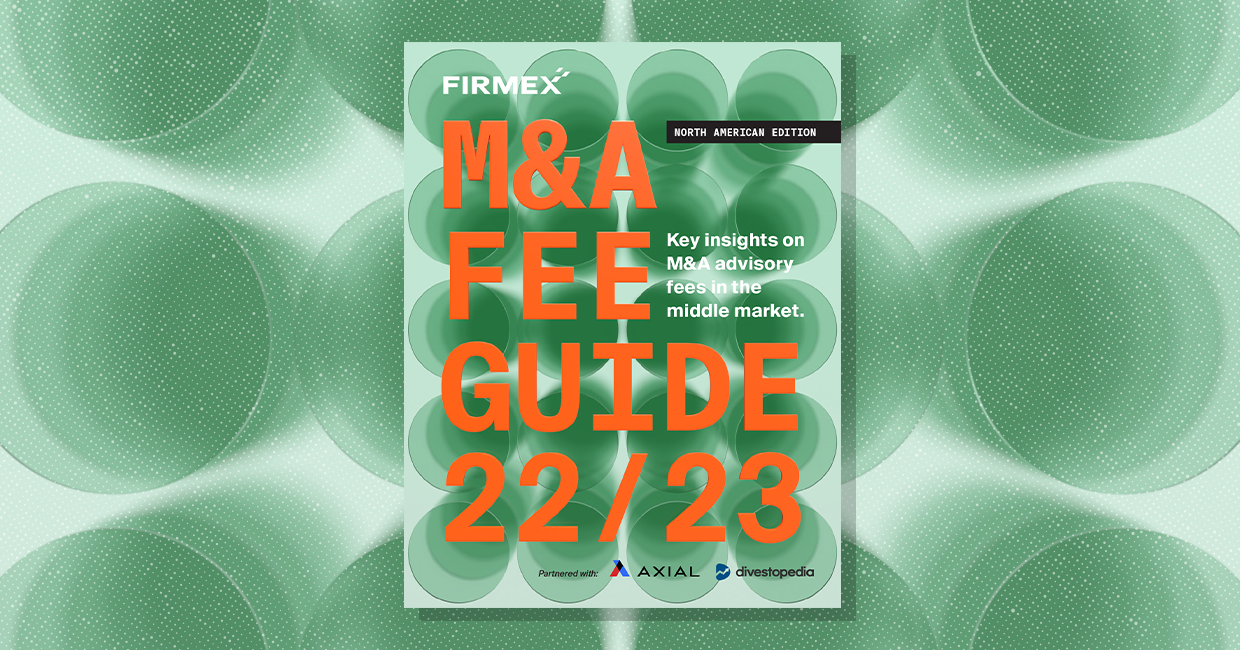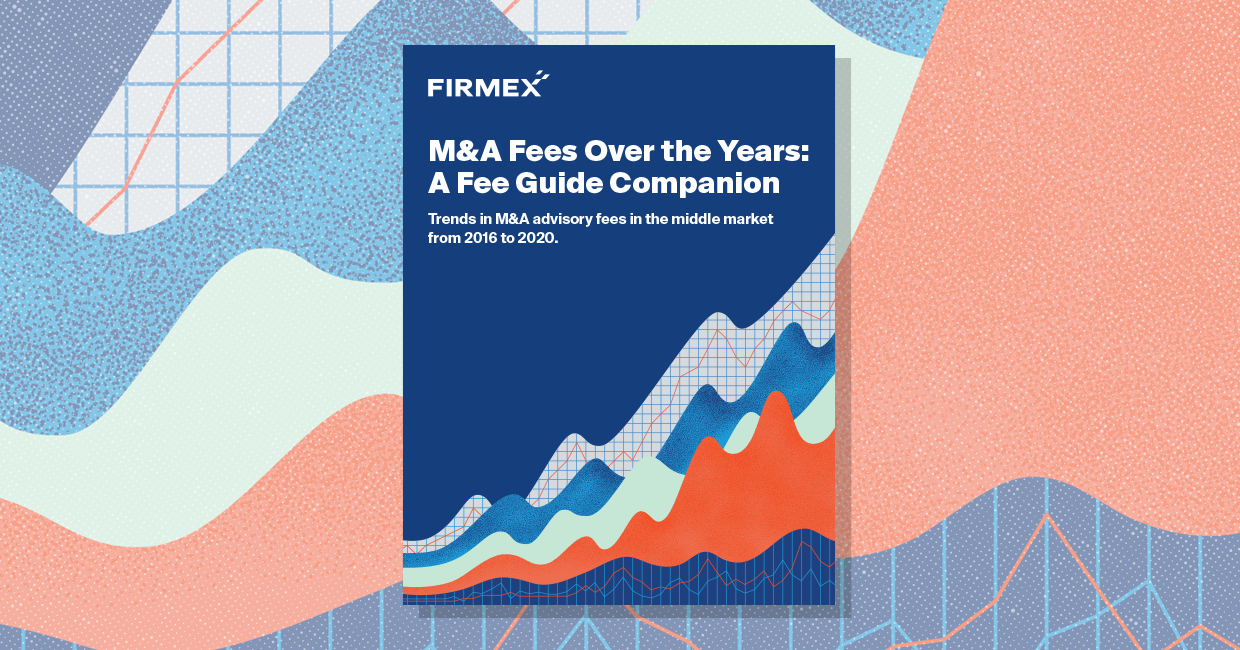Fill out the form below to download your copy instantly.
Deal activity in North America slid lower in 2016 amid a spike in political volatility, although transaction numbers began to rebound in Q4. As the new year kicks off, some uncertainty remains in the M&A environment, with the incoming US administration yet to take office. Where will the opportunities be for savvy acquirers in the months ahead? Five experienced dealmakers weigh in.

Deal activity in North America slid lower in 2016 amid a spike in political volatility, although transaction numbers began to rebound in Q4. As the new year kicks off, some uncertainty remains in the M&A environment, with the incoming US administration yet to take office. Where will the opportunities be for savvy acquirers in the months ahead? Five experienced dealmakers weigh in.
Mergermarket: The North American mid-market saw a dip in activity through Q3 2016, declining 25% by volume year-over-year (1,280 deals this year compared to 1,699 deals a year ago) and 19% in value (US$103bn compared to US$126bn). From what you’re seeing currently, what do you think the picture will look like going into 2017?
M. Bolsinger, Dechert: I think we all acknowledge and have experienced a slowdown in activity. A lot of it was due to political uncertainty, especially from the US election, which is not atypical for an election year. With the election, some bigger questions arise as well, such as the new administration’s possible actions on tax policies, interest rates, and other macroeconomic drivers. So people were cautious, I would say. All of that being said, the numbers did not fall off a cliff.
Heading into next year, there are still some uncertainties with respect to what Presidentelect Trump’s policies will be and until those have crystallized, I think people will still be semi-cautious. But in general we have all seen what the market has done – particularly the small-stock index, which is significantly outperforming the bigger-company index.
This indicates that while people don’t know exactly what to expect from the incoming administration, they think it will probably be more hurtful to globally operating companies than to companies that mostly operate domestically.
I also think people are expecting a handful of things from the new president that are consistent with the Republican agenda, such as deregulation of the financial industry. We believe these could create some sector-specific opportunities that people are already looking into. One area could be banking and insurance, which is clearly on the frontlines due to Mr. Trump’s promise to repeal or replace Dodd-Frank. People also think a rollback of environmental regulations could help natural resource-focused companies and industries. I think people are trying to figure out what the agenda will be in healthcare, but looking at how people are trading, they expect the new government to allow for faster drug approval and to focus less on drug prices, which would bolster pharma companies.
J. Packee, Baird: We obviously don’t have a crystal ball regarding 2017, but there is nothing in our minds that says the broad M&A picture will be significantly different than what we saw over the last six months, when we experienced a very active market. I’ll give you some anecdotes regarding why we think M&A will continue to be extremely important. First of all, there continues to be an all-time record amount of cash sitting on corporate balance sheets – a report by Moody’s last year estimated the number at US$1.7tn, which is a significant amount to be sitting idle. More and more management teams and boards are being to pressured to put that money to work, including in M&A.
The second dynamic is the lack of organic growth around the world. Demand growth in particular is lackluster in this environment, so folks are more willing to put their money to work to grow inorganically. The third dynamic is the private equity capital that’s on the sidelines. Dry powder stood at more than US$800bn in Q3 according to Preqin, and that needs to get put to work.
From our standpoint, our sell-side pitch activity was very strong in Q4 2016. In fact, this was our busiest quarter of the year, and it’s built our backlog into 2017. So that, at a minimum, would tell you the first quarter of 2017 should continue to be pretty active. We also had our 46th annual Baird Industrial Conference in November, with about 200 of our corporate clients in attendance. In listening to those presentations, I’ll tell you that M&A was often among the top three growth topics for these industrial CEOs and CFOs, if not the number one topic. I’d say that’s a pretty good barometer of the forward emphasis that should continue to drive the M&A market.
E. Schaefer, Eurazeo: We are an international listed investment company based in Paris and we opened our New York office last September. This is certainly an interesting time to have arrived in the US. We have seen the uncertainty of the pre-election period come down significantly. You can see the reaction in the stock market, as Markus noted. So we believe that deal activity will be increasing in the coming months and quarters. The US has seen a consistently good level of growth – if not a great level – for a developed economy in recent years.
We have roughly US$5.5bn in assets, of which about US$1bn is in cash. Our distinguishing factor is that our capital is permanent – we don’t go through rounds of capital raising. That allows us to invest in new and existing portfolio companies as vetted opportunities arise. We have about 34 portfolio companies ranging from infrastructure and real assets to SME small-cap and late-stage venture. Our focus in the US is mid-market investments in the consumer and business services sectors, in which we have a successful track record. In surveying the US market, our expectation was that it would be very deep and we have confirmed that it is. We see plenty of opportunities where we think there is potential for domestic growth. Our overseas network, including offices in Shanghai and Sao Paulo, can also be advantageous in accelerating global growth.

M. Sondag, West Monroe: Judging from our conversations with clients, I’m estimating that deal activity next year will be higher than it was in 2016. The emphasis on quality of deals in the second half of 2016 slowed overall deal volume. Clients and bankers tell us they feel confident about the deal inventory that will come in Q1 and Q2 2017. I would also agree with Markus and say that we could potentially hear a more business-friendly tone from the incoming US administration, which may give people optimism about next year. Especially with the Republicans retaining control of the House and the Senate, there’s a higher chance that we might see some favorable business legislation pass during the first two years. It may not be what all people want, but I think we’ll actually see some legislation get done.
M. Goldman, TM Capital: We feel pretty fortunate here at TM – we are coming off some record years, and this trend is continuing in 2016. Coming into the year, we didn’t know what to expect, since we’ve certainly seen cycles before in this business. But the year really kept humming at the same pace for us. Certainly what we’ve heard more broadly is that there are some deals in the market that are of lesser quality. That is often something you run into as the cycle gets long in the tooth, as many of the better deals have already been transacted.
Heading into the new year, the level of pitch activity and transaction activity is about as strong as it was a year ago for us. There was definitely a window when the election was pending that was freezing people a bit, as they wanted to understand what the rules of the road were going to be. But with the election behind us, whatever one’s perspective might be on the outcome, at least we can all plan accordingly.
We’ve also seen higher-quality deals coming to market of late, as Matt mentioned he was seeing as well. Whereas earlier in the year there were some issues with average deal quality, we’re seeing some really high-quality deals coming into the market for the new year. I think that bodes well.
Mergermarket: In 2016, private equity activity in North America remained strong, contrasting with the drop in corporate M&A this year. In Q1-Q3 2016, there were 781 PE deals valued at US$1bn or less in North America, which is just five fewer (786) than in 2015. As competition for deals heats up among buyout firms, what do you see happening in 2017 in terms of PE activity? Do you think there will be enough attractive targets for the growing number of PE firms to buy?

M. Sondag, West Monroe: Thinking back to the last six or seven years, I would say the competition for deals has never been this high. The number of deals we’re working on where sellers are taking two or three buyers all the way to the goal line is at an all-time high. Also, we’re seeing many of our clients trying to preempt the process, trying to win on speed and valuation. Private equity firms have considerable dry powder to deploy, and strategic buyers are very active as well. And, when you factor in lower deal quality, that only increases the competition.
The search for quality over the last two quarters has intensified – but our clients often feel like they’re looking for a needle in a haystack. As a result, we’re seeing some larger funds come down-market a bit and write smaller checks, trying to do more of a growth play. They’re becoming interested in companies that maybe a year or two ago they wouldn’t have targeted.
M. Goldman, TM Capital: The financial sponsors have become a more important factor in the business every year. There’s a particular flavor that’s really been driving transactions lately, which is a lot of private equity firms assembling portfolio companies and then rolling up add-ons to those companies. When we’re selling a business and we look at the range of potential buyers, these tend to stand out in particular, because they have synergies that a strategic buyer has but the capital and deal savvy that a financial sponsor has, all in one package. When we’re starting a process, we’ll also see some straight sponsors and strategics. Then we’ll also see these hybrids that are owned by financial sponsors, and in the majority of our recent deals, those have been the winners, because they just bring all the ingredients. PE firms have been winning a higher and higher percentage of the deals out there, and it’s partly because they’ve also become strategic players.
E. Schaefer, Eurazeo: It is indeed a highly competitive environment, which means that as a PE firm you need to have a differentiating factor. And we have two such factors – our overseas network and our permanent capital. Our permanent capital enables us to be long-term partners with our portfolio companies and setting them up with sustainable growth and expansion. We see that having appeal for familyowned businesses or owner-owned businesses, for example, where an owner may want to find a partner to bring its business to the next level and they may not want to have someone come in for just two or three years. They may want a partnership for five or seven years, because the development of a brand or business requires investment. While short-term agreements may be sufficient, we see a partnership for a longer duration to be more beneficial. And our international network can help US companies expand globally, an initiative that takes time.0
M. Bolsinger, Dechert: I’d say the competitiveness has increased due to several factors. First, there are fewer and fewer large-cap deals being done – we’re seeing fewer transaction values of US$1bn or more, meaning that the larger funds are coming down into the upper-middle market, as Matt pointed out. We’re also seeing the emergence of new buyers that historically may have invested in PE either as a co-investor or through a fund-of-funds but who are now going out on their own, whether it’s family offices or sovereign wealth funds. And given that they are all playing into roughly the same market, there is definitely increased competition. This increases the need for discipline by PE investors not to overpay.

There is also plenty of competition from strategics, which are very acquisitive too and sitting on a lot of cash. They may be able to deliver more certainty in some transactions and are able to deliver faster than a PE buyer generally. They can also pay more if they’re willing to share some of the synergistic benefits a combination would have. But the question is: Are there enough targets? One part of the answer is that PE firms not only need to buy, they also need to harvest. And that means that plenty of funds are out there selling their portfolio companies. So we’re seeing a lot of secondary trades.
J. Packee, Baird: Private equity remains very active, and there has indeed been an elevated level of buyer competition for sell-side M&A transactions. Obviously, the credit markets are accommodating at the moment, which is one major driver. We’re also seeing PE acquirers underwriting transactions at lower returns than we have seen historically. And these PE acquirers are being pressured to put their unused capital to work, since they don’t want to have to hand it back to their LPs.
Mergermarket: One interesting aspect of dealmaking in 2016 has been an increase in inbound mid-market M&A to North America, especially from Asiabased acquirers. Overall, inbound deal value went up 21% in North America in Q1-Q3 to US$22.9bn. What do you think is driving this increased interest on the part of foreign buyers, especially from Asia? And have you personally seen this trend in your practice?
J. Packee, Baird: We are definitely seeing that dynamic in our Baird transactions. Many companies in the large Asian economies are in an inorganic growth phase, and we don’t see that slowing. Our analysis shows that Japan is the most active of these, especially in industrial technology services, consumer and healthcare transactions. More broadly speaking, there are a number of key region specific reasons why this is happening.
The first reason is what we would call a “go global” strategy that many Asian corporates have enacted to elevate themselves from national businesses to global companies, and they’re using M&A to help them do that. In Japan, we think outbound M&A activity is being driven largely by limited domestic growth and a population base that is aging, so they are looking elsewhere for customers. The drivers in China include acquiring overseas businesses to help them gain industrial technologies – automation technologies in particular are highly coveted targets. Buying global businesses also helps Chinese companies supply branded Western products in their domestic market. In India, many corporates are acquiring overseas assets to move up the value chain, especially in business process outsourcing and IT sectors. And the last major pocket in Asia is Australasia – they are acquiring across a broad range of companies to expand geographically and reach a bigger customer base.
This is all being fed by the high number of private equity exits happening in North America and Europe. There has been a healthy supply of businesses up for sale over the last 24 months, especially within the last 3 to 6 months.

M. Goldman, TM Capital: Over the last 18 months, we’ve had transactions involving a Japanese acquirer, a Chinese acquirer, and an Indian buyer. So Asian outbound activity has definitely been driving transaction interest and valuations. Stepping back and thinking about why that would be the case, in addition to the fundamental trends pointed out by Joe, I think that cultural differences play a role as well. It can be difficult for some Asian companies to make greenfield investments here, even though they’re very successful in their home markets. It can be a huge challenge setting up an operation and managing all the communication, cultural, political, and other factors that go into having a successful business in the US. If they buy a business here instead that already has an established brand name and relationships, as well as the knowledge of how to do business here, that can bring a lot to the table.

Many of these acquirers have significant resources and capabilities – they can hit the ground running. A domestic acquirer might look at the same target we’re selling and think, “That’s nice to have.” Whereas an acquirer out of Asia might look at the same target and say, “That’s one I have to have, because I can’t really capture that business or position except through acquisition.”
E. Schaefer, Eurazeo: In a sense, we are foreign inbound capital, since we are headquartered in Europe. So we certainly recognize this trend. At the same time, once we build a portfolio here, we will also benefit from money coming from places like the Middle East, Asia, and Brazil – those trends are essential to us.
I also think there is a particularly interesting reason that helps explain inflows into the US and Europe from Asia. Years ago, one of the main reasons for Asian buyers to invest in the West was that they wanted to re-allocate and diversify their asset strategy; we saw many Middle East players doing this as well. They essentially wanted to diversify their exposure in different regions. Now what we are seeing more is that Asian buyers come in to find a good brand, product, or technology that they can bring back to their home market, because the consumer market in China and Southeast Asia is expanding rapidly. So many strategic buyers from Asia now look at what positive incremental synergies they can get by buying a brand, because they can bring it back to their home countries.
M. Sondag, West Monroe: Lately, we’ve seen several deals in which Asian acquirers have come in and said, “We want this asset and we’re going to pay whatever it takes.” Who knows if they’re going to be able to get a good return on it, but they’re committed. We’ve seen it across the board – in manufacturing, technology, hospitality. Just last month, a Japanese corporate investor announced its commitment to invest $50 billion in the US. Some of that investment will certainly be M&A-related.
I think there are several reasons for this infusion of foreign capital. Number one, the US continues to be a great region for investment. Secondly, some local investment in Asia into things like infrastructure and housing has not generated a return, and I think that caused a bit of skepticism for investors. So, they’re looking elsewhere to diversify. Outside of Asia, we’re seeing some of our European clients nesting in the US more and more. Some of that might be driven by concerns over Brexit, high unemployment across several of the EU countries, or even immigration concerns.
M. Bolsinger, Dechert: Until the recent announcement of “strict controls” on overseas investments by China’s State Council, there certainly was a Chinese mandate for companies to diversify their business holdings. A lot of semi-stateowned investment companies were charged with going out and investing in Europe and the US. Besides diversification, I think a lot of the buying activity was driven by a desire for access to research and development and innovation, so things like industrial engineering and electronic engineering capacity. They also have an incredible amount of capital to deploy.

On the flip side, with President-elect Trump vowing to rebuild the American economy by fighting free trade and singling out China as a currency manipulator – as well as increasing the enforcement of trade cases against China and potentially imposing tariffs on Chinese imports – all of that is not incredibly conducive to increased investments from China. Even now, some sellers are hesitant to accept a bid from a Chinese buyer because of the threat of the Committee on Foreign Investment in the United States (CFIUS) rejecting the deal. When we represent Chinese investors in the US, that is a real issue. I’ve seen deals where the Chinese bidders were the highest bidders, but for regulatory uncertainty reasons, people went to the next lower bidder or a domestic bidder in order not to have to deal with those uncertainties. What additional negative impact China’s effort to slow the surge in capital fleeing offshore with its “strict controls” might have
remains to be seen.
Mergermarket: The use of private debt for M&A activity continues to expand. As of Q3 2016, closed-end private debt funds in North America had more than US$131bn in dry powder, the highest amount on record. What do you think explains this trend, and did you see an increased use of private debt in your practice this year?
M. Bolsinger, Dechert: Debt is certainly very important to the private equity business, and I think when you talk about how PE will be doing in 2017, the industry heavily relies on the availability of credit, both in the secured lending space and in the capital markets. And I see private debt remaining a strong market, for good reason. I haven’t seen deals in many years now for mezzanine because the unitranches that an alternative lender can offer are overall a lot more attractive than having a senior and mezzanine lender in there. It takes away a lot of the complexity, speeds up the execution, and has the benefit of dealing with smart people who have a lot of flexibility where and how they want to come into the capital structure. They tend to be a bit more creative than your typical bank lenders.
M. Sondag, West Monroe: Interest rates continue to be at absolutely historic lows.
And with valuations surging, you’ve got folks using more leverage in order to be competitive, and they’re able to do that because debt is so cheap. Changing their financial model allows them to maybe pay a turn more. Our clients know there’s only one direction for interest rates to head at this point, so it’s not getting any cheaper in the years to come. However, the good news is that even if rates move up a quarter of a point for, say, four straight quarters, rates would still be very low historically.
E. Schaefer, Eurazeo: I think there are two ways of looking at this trend. One is to say that it’s absolutely normal that private0 0debt funds have been successful in raising money, since everybody out there with money to invest is looking for yield. On the other hand, for several years now there has been a good level of interest from direct lenders in smaller or more complex businesses. We may not always acquire a business with a full finance team in place, or maybe it’s difficult to understand the cash flow or there are cash flow constraints for some reason. In these cases, the traditional banking market is not always the best solution and direct lending may be the best strategy.
M. Goldman, TM Capital: One point to be made here is the interest rate environment, as Markus and Matt have mentioned. When you’re in a low-rate environment like this, investors are generally chasing yield, and in a market like this that has strong M&A volume and low default rates, it can make private debt look like a good asset class for investors. So I think we understand why assets are piling up in that category.
Then in terms of the private debt funds putting that money to work, the regulatory environment is one factor in their favor. This may change depending on the actions taken by the incoming administration, but regulations for banks have become more restrictive in recent years. Especially since the financial crisis, they sort of have a box that credits need to fit into in order to fit their model. And there are a lot middle-market credits that are good but don’t fit into that box. So there’s a gap in the market that the banks aren’t filling, and the private debt funds have been coming in there and filling that gap.
A private debt fund may also take down an overall facility and then the banks take a senior piece of that that fits their model. I think they’ve been able to work in a complementary way, and it’s very helpful for our transactions to have that additional debt capability available on the market.
J. Packee, Baird: I would agree with these points, and, in our processes, we have certainly seen more and more private debt get put to work. Overall, as we headed into this back half of the year, the leveraged loan volume went up significantly, especially in October, when it was up about 40% over the LTM average. So there is definitely plenty of debt out there getting put to work, whether it’s private or otherwise. Of course, we don’t know where interest rates will go under the Trump presidency. No matter what, interest rates are likely to be at historically low levels, even with incremental hikes.





